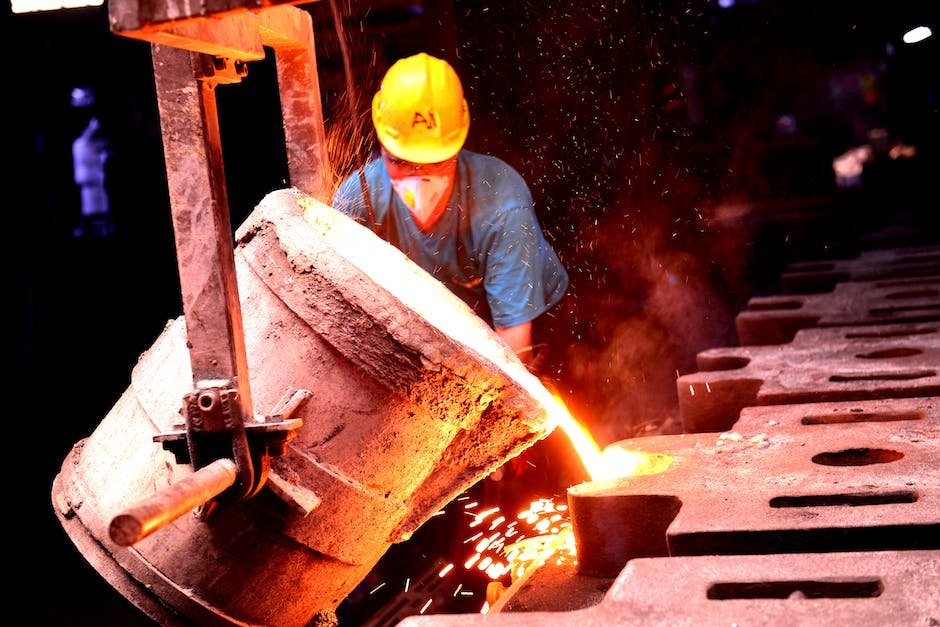How to
How to Customize a General Cleaning Checklist for Your Family’s Needs

Keeping your home clean can sometimes feel like a never-ending task. There’s always something that needs to be tidied, wiped down, or organized.
To make the process more manageable and efficient, why not tailor a cleaning schedule that fits your unique lifestyle?
Keep reading for tips on customizing a general cleaning checklist for your family’s needs.
Assess Your Family’s Needs
The first step to customizing your cleaning checklist is to assess your family’s needs. Every household is different, and so are the cleaning tasks that need to be done.
Think about the size of your home, how many people live in it, and what their daily activities are. For example, if you have pets or young children, you may need to prioritize tasks such as vacuuming or sanitizing frequently touched surfaces.
Additionally, consider any specific cleaning preferences or allergies your family may have. This will help you determine which products to use and which tasks are a priority.
Break Down Tasks by Frequency
Breaking tasks down by frequency makes the list more manageable and ensures nothing important gets overlooked. It also helps to distribute tasks evenly throughout the week.
For example, daily tasks might include making beds and doing dishes. Meanwhile, weekly tasks could be vacuuming and mopping floors. Monthly tasks could involve cleaning out the fridge or dusting hard-to-reach areas.
By categorizing these tasks, you can create a more realistic cleaning schedule that fits your family’s lifestyle.
Assign Roles and Responsibilities
Involving the whole family in maintaining a clean home can make the workload lighter and teach everyone responsibility. Assigning roles and responsibilities ensures that each family member knows what is expected.
You can rotate roles and tasks to keep things fair or allow each family member to choose their preferred tasks. For instance, one person can be in charge of laundry while another cleans the bathroom.
Having designated roles also helps to avoid confusion and ensures all necessary tasks are completed.
Use Tools and Resources
Having the right tools and resources can make cleaning more efficient and effective. Invest in quality cleaning supplies and use cleaning apps or printable checklists to stay organized.
You can also use online resources to find cleaning hacks and tips specific to your needs. For example, if you have pets, you can learn how to easily remove pet hair from furniture or carpets.
Review and Adjust Regularly
Life is unpredictable, and so are cleaning needs. Regularly reviewing and adjusting your home cleaning schedule will ensure it remains effective and relevant.
For instance, if your family’s schedule changes, you may need to reassign tasks or adjust the frequency of certain chores. Or, if you find a more efficient way to clean an area, you can update your checklist accordingly.
Sometimes, a busy lifestyle can also make it challenging to keep up with all the chores. In such cases, consider hiring Detail Cleaning Services. They provide professional and thorough cleaning services that will leave your home sparkling clean.
Tailor a General Cleaning Checklist for Your Family’s Needs Today
Customizing a general cleaning checklist for your family’s needs can improve the efficiency and effectiveness of your cleaning routine. By assessing your family’s specific needs and preferences, you can create a personalized checklist that will make cleaning a breeze.
So why wait? Start customizing your checklist today and experience the benefits for yourself!
Was this article helpful? For more cleaning tips and tricks, visit our page regularly.
If you gained new insights from this article, be sure to explore our blog for more enlightening content.
How to
How to Choose the Right Molded Cast Material for Your Project

Bringing a project to life can be exciting but also challenging. One important part of any project is choosing the right molded cast material. With so many options available, it can be hard to pick the best one for your needs.
This decision can greatly affect the final result, so it’s important to choose carefully. Each material has its own pros and cons, from durability to cost. In this guide, we’ll explore the key factors to think about when creating mold material.
Let’s get started!
1. Understand Your Project Requirements
Before making any decisions, it’s crucial first to define the specific needs of your project. Are you designing for rigorous industrial applications or creating intricate designs for consumer products? Knowing the environment in which your molded cast will be used is key.
For instance, parts intended for high-heat applications may require materials such as silicone or certain thermoplastics. Conversely, for components exposed to chemicals, materials like epoxy might offer better resistance. Take time to outline your project’s functional requirements, including:
- load-bearing capacity
- thermal stability
- and intended lifespan
2. Consider Material Properties
This is because the material used can greatly impact the final outcome and durability of the project. Factors such as strength, flexibility, heat and chemical resistance, and color retention should all be taken into account when choosing the right mold material for the job.
For example, 3D printed sand mold castings offer a unique combination of strength and lightweight properties. This makes them ideal for complex designs with functional requirements.
Understanding these properties not only aids in application suitability but also helps in cost-effectiveness. By considering the material properties, you can ensure that your project is successful and meets your desired specifications.
3. Evaluate Production Processes
When deciding on the right molded cast material for a project, it is crucial to carefully evaluate the production processes involved. Each production process, whether it be injection molding, blow molding, or rotational molding, has unique characteristics and requirements that must be taken into consideration. This evaluation should include a deep understanding of the following:
- design specifications
- production volume
- and cost requirements
In addition, the material properties such as strength, durability, and flexibility should also be carefully evaluated. A thorough analysis of the production processes will lead to the selection of the most suitable and cost-effective material for your project. This will ensure successful production and satisfaction.
4. Cost Considerations
When balancing quality and budget, don’t forget to factor in the total cost of ownership. The initial expense might not be the only consideration-think about the long-term costs of maintenance, durability, and even potential failure of the molded cast. Selecting a cheaper material may result in higher costs down the line if it doesn’t meet durability requirements or fails prematurely.
Moreover, understanding bulk pricing and production efficiency can help you find significant cost savings. Partnering with a supplier who can provide a wide range of molded cast materials can also offer insights into the following:
- ongoing cost reductions
- and improving project feasibility
Choose the Right Molded Cast Material for Your Project
Choosing the right molded cast material for your project is crucial for achieving the desired results. By considering factors such as the characteristics of the material, your project requirements, and cost-effectiveness, you can make an informed decision.
Don’t hesitate to consult with experts and utilize samples to find the perfect material for your project. Start your search today and see the difference the right casting mold material can make.
Looking for more tips and advice? Make sure to bookmark our page and come back to check out more articles.
How to
How to Choose the Best Speaker for Your Event

The Importance of Selecting the Right Speaker
Choosing the right speaker is one of the most critical decisions in event planning. The speaker serves not only as the face of the event but also as the conduit through which your message is channeled to the audience. A well-chosen speaker can enchant, engage, and elevate the audience’s experience, ensuring they leave the event with lasting impressions. This is especially vital for corporate events, where aligning with your corporate keywords can lead to transformational outcomes and reinforce brand messaging. Thus, the selection process requires careful consideration of a speaker’s style, track record, and ability to connect with attendees on both an emotional and intellectual level.
Determining the Purpose of Your Event
Every successful event is anchored by a clear purpose. Whether the aim is to educate industry peers, inspire employees, or entertain clients, having a well-defined goal is crucial. Events are increasingly being tailored to meet specific objectives, and knowing what you want to attain will guide your search for the perfect speaker. If the goal is educational, a speaker with expertise and authoritative knowledge will be essential. Conversely, if the aim is to motivate, a speaker renowned for their charisma and storytelling ability might be more appropriate.
Understanding Your Audience
A clear understanding of your audience is vital when selecting a speaker. Consider their demographics, professional backgrounds, societal roles, and what they seek to learn or experience. A successful speaker selection aligns these expectations with someone who can speak directly to the audience’s interests and needs. This alignment not only ensures engagement but also fosters a sense of connection between the speaker and the attendees, thus enhancing the overall impact of the event.
Types of Speakers to Consider
The array of speaker types can be bewildering, but breaking them down into categories can help clarify the selection process. Keynote speakers are typically experts in their field, setting the tone for your event with authority and expertise. Motivational speakers, often chosen for their compelling personal stories and energy, can inspire and energize. Likewise, industry-specific speakers provide deeper insights into niche subjects, and celebrity speakers often draw larger crowds due to their fame and appeal. Each type serves a distinct purpose and should be considered in relation to your event’s goals and audience expectations.
Evaluating Speaker Credentials and Experience
A speaker’s credentials and experience are a cornerstone of their credibility and potential success at your event. Vetting a speaker involves reviewing their background, listening to past speeches, and assessing audience feedback from previous engagements. It’s beneficial to examine whether they have experience with events similar to yours, which can indicate their ability to handle your specific audience’s nuances. A proven track record of positive endorsements and successful events often suggests reliability and competence.
Budget Considerations
Budget plays a pivotal role in the planning of any event. Speaker fees can vary widely, influenced by factors such as experience, notoriety, and demand. It’s essential to align your budget with your event’s goals without compromising the impact you wish to achieve. High-profile speakers might charge more, but their ability to draw crowds and deliver compelling content often justifies the cost. Strategically allocate resources to ensure that the speaker’s value aligns with the event’s aspirations and anticipated return on investment.
The Role of Technology in Modern Speaking Engagements
Technology has revolutionized the landscape of speaking engagements, offering innovative ways to engage audiences. In the era of virtual and hybrid events, technology can enhance interaction and widen reach. Tools such as virtual Q&A sessions, live polling, and multimedia presentations enrich the audience experience, fostering engagement even beyond physical confines. The cost-efficiency and accessibility of hybrid events also allow for more inclusive participation, making them a popular choice in contemporary event planning.
How to Book a Speaker
The logistical process of booking a speaker involves several critical steps. Initiate this process well in advance to ensure availability, effectively communicate your event needs, and specify expectations. Contracts should clearly outline services, fees, and deliverables, while also considering potential travel and accommodation needs. Effective planning and communication are key to securing your ideal speaker, ensuring they are well-prepared and aligned with your event objectives.
Choosing the right speaker requires balancing purpose, audience understanding, speaker type, budget, and technological enhancements. Through diligent research and strategic planning, you can ensure that your event leader captivates attendees, fulfilling the event’s goals and leaving a lasting impact.
Conclusion
Choosing the right speaker is essential for the success of your event, as it directly impacts audience engagement and the achievement of your goals. Consider your event’s purpose, the audience’s needs, and the speaker’s credentials, experience, and style to ensure a strong connection. By balancing your budget and leveraging technology, you can create a memorable experience that leaves a lasting impact.
How to
How to Choose the Right Transparent Tube for Your Needs

How do you choose the right transparent tube for your needs?
With many options available, it can be hard to know where to start. Whether you need a tube for storage, packaging, or display, it’s important to think about size, material, and strength.
A transparent tube lets you easily see what’s inside, which is great for showing off products or organizing things. Knowing the different types of transparent tubes and their features will help you pick the best one.
Keep reading to find out how to choose the perfect transparent tube for your needs.
Consider the Size
The size of the transparent tube is important when choosing the right one for your needs. Whether you’re using it for storage, display, or packaging solutions, the tube should fit the item you want to store or show.
Measure the length, width, and diameter of your product to make sure it fits well. If the tube is too big or too small, it might not work as well.
A tube that’s the right size will protect your product and display it better. For a more secure option, you can consider visiting https://www.petropackaging.com/plastic-tubes/clear-plastic-tubes-sealed-bottom/, which helps keep everything safe inside.
Choose the Right Material
The material of a transparent tube plays a big role in how well it works for your needs. Different materials, like plastic and acrylic, offer unique benefits depending on what you’re using the tube for.
If you need a lightweight option for simple storage or display, plastic might be a good choice. On the other hand, acrylic is stronger and more durable, making it a better option for items that need extra protection.
The right material also depends on the packaging types you are using. For example, if you are packaging products that require durability, a stronger material will help prevent damage. Choose carefully to ensure the tube will provide the best protection and display for your items.
Think About Strength
Strength is an important factor when selecting a transparent tube. If you need a tube that can handle pressure or impact, make sure to choose a stronger material. A sturdy tube can protect your items from damage during transport or storage.
Whether you are using the tube for packaging or display, considering its strength will give you peace of mind knowing your products are safe.
Stronger tubes also tend to last longer, making them a more reliable choice for long-term use. Ensure the tube’s strength matches the needs of your items.
Check for Closure Options
Closure options are important when selecting a transparent tube. Depending on what you need to store or display, you might require a tube with a secure lid or cap. A tight-fitting closure keeps contents safe and prevents spills or damage.
Look for tubes with screw-on, snap-on, or push-on lids to match your specific needs. The right closure option ensures a peaceful mind, knowing your items will stay protected and secure.
Whether for packaging, storage, or display, selecting the right closure can make a big difference in keeping everything intact.
Choose the Perfect Transparent Tube for Your Needs
Selecting the right transparent tube is essential for protecting and displaying your items. By considering factors like size, material, strength, and closure options, you can find the perfect fit for your needs.
Whether you’re using it for packaging or storage, a well-chosen transparent tube offers both security and visibility. Make the right choice today to ensure your products are safe and presented beautifully.
Did you find this article helpful? You can check out our website for more awesome content like this.

 Entertainment7 months ago
Entertainment7 months agoSandra Orlow: Exploring the Life and Legacy of a Cultural Icon

 General4 months ago
General4 months agoBaby Alien Fan Bus: Watch Parts 2 & 3 on Twitter, Reddit!

 Business8 months ago
Business8 months agoTex9.Net Crypto: Fast, Secure International Money Transfers with Competitive Rates

 General4 months ago
General4 months agoDiana Nyad & Bart Springtime: A Swim to Success

 Business8 months ago
Business8 months agoSnapchat Planets: Exploring Your Streak Universe

 Business8 months ago
Business8 months agoWhat is O Farming: How to Make Money Online and Its Start-Up Benefits

 General6 months ago
General6 months agoDeeper Dive into myfavouriteplaces. org:// blog

 Business8 months ago
Business8 months agoFintechZoom Apple Stock: Real-Time Insights and Expert Analysis
















